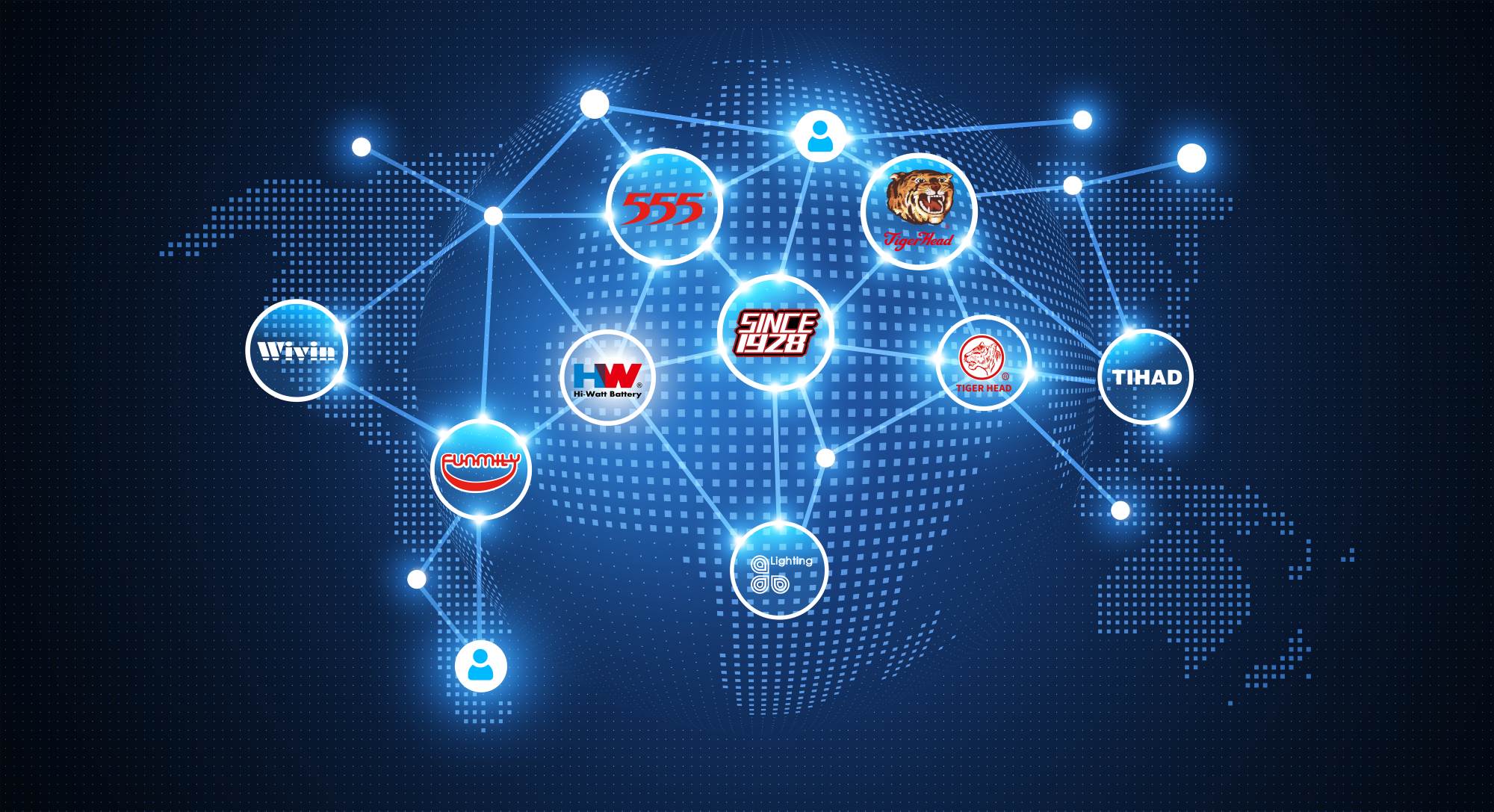What Type of Battery is a Maintenance-Free Battery

When shopping for electric vehicles, cars, UPS backup power supplies, or solar energy storage systems, we often see the term "maintenance-free battery." Many consumers and buyers are confused: What exactly is a maintenance-free battery? What are the different technology types? What are their applications? Are brands like Tiger Head Battery trustworthy?
This article will provide an in-depth understanding of the definition, types, differences, and application scenarios of maintenance-free batteries, helping you quickly find the right product for you.
What is Maintenance-free Battery?
A maintenance-free battery is a type of "sealed battery," as opposed to traditional open-cell lead-acid batteries. Its optimized internal structure eliminates the need for users to add electrolyte or perform maintenance throughout its life, hence the name "sealed maintenance-free battery."
Common applications include:
- Car starting batteries (maintenance-free car batteries)
- Motorcycle and power tool batteries
- Solar energy storage systems
- UPS systems
- Backup batteries for medical and communications equipment
With technological advancements, maintenance-free batteries have become a mainstream choice for home and commercial energy systems, primarily due to their safety, stability, low maintenance, and environmental friendliness.
What are the differences between the maintenance-free battery types: AGM, GEL, and Lithium-Ion Battery?
Mainstream maintenance-free batteries on the market generally fall into the following three categories:
AGM Battery (Absorbent Glass Mat Battery)
AGM batteries use glass fibers to tightly bind the electrolyte between the positive and negative plates. They offer high energy density and low internal resistance and are commonly used in high-performance cars, motorcycles, and emergency power systems.
Features:
- Strong cold-start capability, suitable for maintenance-free car battery applications
- Fast charging and excellent conductivity
- Vibration- and leak-proof, safe and stable
- Affordable price, high cost-effectiveness
Suitable for: Private cars, UPS systems, and RV energy storage.
GEL Battery (gel-cell)
GEL batteries incorporate silicon dioxide into the traditional lead-acid structure, creating a gel-like electrolyte for greater stability. They are used in deep-cycle applications such as solar energy storage, communications equipment, and medical systems. Features:
- Excellent deep discharge and cycle performance
- Excellent high-temperature stability, suitable for outdoor systems
- Longer service life than AGM batteries
- Easy to pair with solar controllers and inverter systems
Suitable for: Solar photovoltaic systems, energy storage cabinets, and grid-tied wind power generation systems.
Lithium-Ion Battery
Lithium-ion batteries represent a new generation of high-performance, maintenance-free battery technology. They utilize the intercalation and extraction of lithium ions to store and release energy, resulting in high energy density and a long cycle life. They are the core of modern energy storage and power systems.
Key Features:
- True maintenance-free: Fully enclosed design, no electrolyte required
- High energy density: 3-5 times the energy of lead-acid batteries per equivalent volume
- Long cycle life: Supports over 3,000 deep charge and discharge cycles
- High charge and discharge efficiency: Recharge efficiency exceeds 95%
- Low self-discharge rate: Stable performance even during long-term storage
- Wide temperature range: Suitable for temperatures from -20°C to 60°C, but thermal management systems are required for high-temperature environments
Applications:
Electric vehicles, energy storage power stations, UPS backup power supplies, aerospace equipment, portable electronic devices, etc.
AGM vs GEL vs Lithium-Ion Battery – What's the Difference?
When it comes to choosing a Maintenance-free battery for your vehicle, solar system, or industrial equipment, you may encounter three major types: AGM Battery, GEL Battery, and Life Maintenance-free Battery. Though all are sealed and require no regular maintenance, they differ in structure, performance, applications, and lifespan.
Here’s a detailed comparison:
|
Feature |
AGM Battery |
GEL Battery |
Lithium-Ion Battery |
|
Battery Design |
Uses absorbent glass mat to hold electrolyte |
Uses silica gel to immobilize electrolyte |
Utilizes lithium-ion movement with liquid or polymer electrolyte |
|
Maintenance Requirement |
Maintenance-free |
Maintenance-free |
Fully maintenance-free |
|
Charge/Discharge Efficiency |
High (low internal resistance) |
Moderate |
Very high (up to 95% round-trip efficiency) |
|
Deep Cycle Capability |
Moderate to high |
Excellent |
Excellent, with long cycle life |
|
Temperature Performance |
Performs well in cold climates |
Performs better in hot environments |
Wide temperature range; thermal management required in high heat |
|
Vibration Resistance |
Excellent |
Moderate to good |
Excellent; highly stable in EV and portable systems |
|
Typical Applications |
Cars, motorcycles, UPS systems |
Solar energy storage, medical equipment |
Electric vehicles, solar systems, backup power, aerospace, mobility |
|
Price Range |
Mid-range |
Mid-to-high |
High-end (higher upfront cost, lower lifetime cost) |
|
Average Lifespan |
3–5 years |
4–7 years |
6–10+ years, up to 15 years depending on use |
|
|
Summary:
- AGM Batteries are ideal for users who need an affordable, reliable maintenance-free car battery with good cold-start performance.
- GEL Batteries are better suited for deep-cycle environments such as solar power systems, emergency backup, and medical devices.
- Lithium-Ion Batteries offer the highest energy efficiency, longest lifespan, and best performance for mission-critical and power-sensitive applications such as EVs and data centers.
Why choose Tiger Head Battery?

Founded in 1928, Tiger Head Battery is a leading, established battery manufacturer in China with extensive experience and reliable supply chain capabilities in the maintenance-free battery field. Its battery products include AGM batteries, GEL batteries, and Lithium-Ion Battery, offering the following advantages:
Compliant with international standards such as RoHS and CE, environmentally friendly, mercury-free, and cadmium-free.
High deep cycle capacity, suitable for long-term use in solar and EV applications.
The brand is well-known, with exports to over 90 countries across Africa, Southeast Asia, and South America, and extensive export experience.
Tiger Head Battery offers maintenance-free car batteries suitable for various scenarios and welcomes global inquiries and cooperation.
How to Choose the Right Maintenance-free Battery for You
Choosing the right maintenance-free battery requires a comprehensive consideration of your actual usage needs and the battery's performance characteristics. Here are some key recommendations:
Usage Scenario
First, determine the battery's primary application. Is it for car starting, power tools, photovoltaic energy storage systems, or industrial backup power? Different scenarios have different requirements for battery capacity, interface, and voltage stability.
Discharge Frequency and Cycle Depth
If the battery frequently requires deep discharge or frequent charge and discharge cycles, it is recommended to choose GEL or LIFE lithium iron phosphate batteries. These batteries offer superior cycle life and discharge performance, making them suitable for frequent use. Initial Investment and Maintenance Costs
Although LIFE batteries have a slightly higher initial investment, their longer lifespan and near-zero maintenance costs make them more cost-effective over time. In contrast, lead-acid batteries, while cheaper, require more frequent replacement and maintenance, potentially increasing overall costs.
Installation Environment
The battery's operating environment is also crucial. If the environment is subject to high temperature, high humidity, or vibration, choose a battery that is heat-resistant and shock-resistant. For example, industrial mobile equipment or outdoor photovoltaic applications require high battery weather resistance.
Lifespan and Warranty Requirements
It is recommended to choose a manufacturer that has obtained international quality certifications (such as ISO, CE, UL, etc.) and offers a clear warranty policy. This not only guarantees specifications and performance, but also makes it easier to obtain technical support and after-sales service in the event of any problems.
Recommended Brands
Whether you are an individual user, a purchasing manager, or a project manager, it is crucial to choose a brand that excels in technical certifications, product line integrity, and after-sales service. For example, Tiger Head Battery, with its diverse product range and consistent quality, is one of the industry's most respected suppliers of high-quality, maintenance-free batteries.
FAQ
1. Which is better: AGM batteries, GEL batteries, or lithium-ion batteries?
This depends on the application scenario:
If fast charging and high starting performance are required (such as in automobiles or UPS systems), AGM batteries are more suitable;
If deep-cycle applications such as solar energy storage, communications, or medical equipment are required, GEL batteries perform better;
If high energy efficiency, long life, and lightweight are desired, lithium-ion batteries are the best choice.
2. Are maintenance-free batteries truly maintenance-free?
Maintenance-free batteries do not require electrolyte addition or regular fluid level checks, but they still require:
Regularly check the terminals for oxidation;
Maintain a well-ventilated and dry environment;
Avoid overcharging or discharging.
Under normal use, lithium-ion batteries are truly "zero maintenance."
3. Can maintenance-free batteries be used in solar energy systems?
Yes. Maintenance-free batteries (such as GEL, AGM, and lithium-ion batteries) are widely used in solar energy storage systems.
- AGM batteries are suitable for small and medium-sized off-grid photovoltaic systems;
- GEL batteries are suitable for high-temperature, deep-cycle applications;
- Lithium-ion batteries are currently the mainstream choice due to their high energy density, long life (3,000–6,000 cycles), and low maintenance.
Their advantages include high charge and discharge efficiency, zero maintenance, strong environmental adaptability, and a long lifecycle.
As a result, lithium-ion batteries have become the mainstream solution in modern photovoltaic energy storage systems.
4. What is the service life of a lithium-ion battery?
Typically, lithium-ion batteries have a cycle life of 6–15 years, depending on the depth of charge and discharge, operating temperature, and the performance of the battery management system (BMS). Compared to lead-acid batteries, they have a longer lifespan and more stable performance.
5. Are lithium-ion batteries safe?
Yes. High-quality lithium-ion batteries are equipped with a battery management system (BMS) that effectively prevents overcharging, over-discharging, short circuits, and overheating. As long as they are installed and used according to the manufacturer's instructions, their safety is fully controllable.
Conclusion
Maintenance-free batteries, a core achievement of modern battery technology, are widely used in various fields, including transportation, energy, communications, and healthcare. Understanding their types (AGM batteries, GEL batteries, and Lithium-Ion Battery) and their nature is crucial for choosing an efficient, safe, and sustainable energy supply solution.
If you are shopping for a maintenance-free car battery, choosing a trusted brand, the right type, and the correct capacity will safeguard your power environment.
For Tiger Head Battery product brochures or quotes, please contact us for support.






